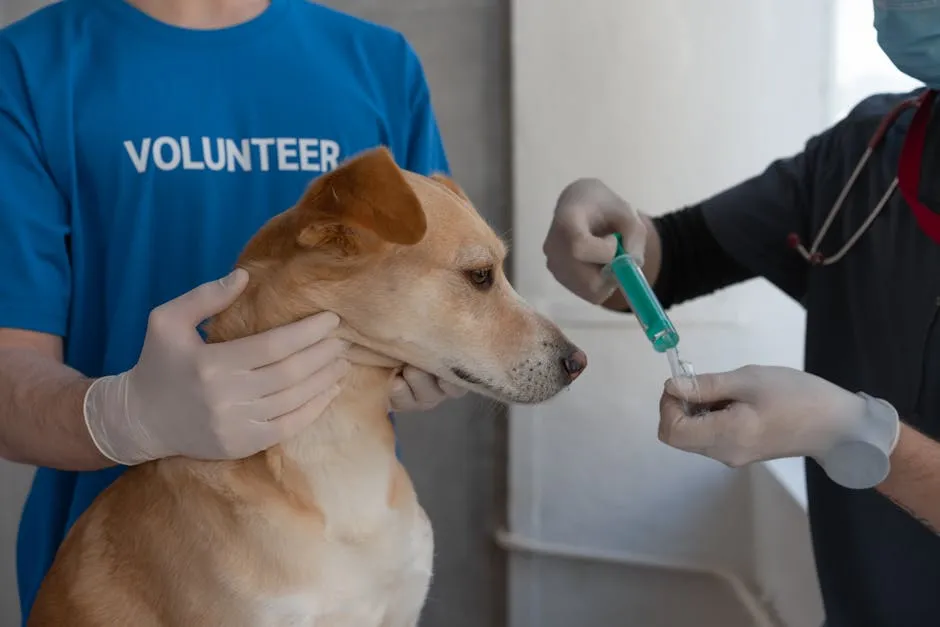
Why is CPD Beneficial in Pets?
The Importance of CPD in Veterinary Medicine
Continuous Professional Development (CPD) is essential for veterinary professionals. It ensures that veterinarians remain knowledgeable and skilled throughout their careers. With constant advancements in veterinary medicine, staying up-to-date is crucial.
So, what exactly is CPD? Simply put, it’s a systematic way for vets and nurses to enhance their skills and knowledge continually. This includes attending workshops, online courses, seminars, and hands-on training. The aim? To adapt to the latest techniques and treatments in the field.
In the UK, veterinary surgeons are required to complete a minimum of 35 hours of CPD each year. This requirement also extends to veterinary nurses, who must complete at least 15 hours annually. These regulations ensure that all practitioners meet high standards of care.
Why is this important? Because the relationship between CPD and improved veterinary practices is undeniable. When professionals engage in CPD, they not only enhance their skills but also improve patient outcomes. Being informed about the latest research and techniques allows veterinarians to provide the best care possible.

Speaking of staying informed, consider adding a Veterinary Anatomy Coloring Book to your study materials. It’s a fun and engaging way to solidify your understanding of complex anatomy while adding a splash of color to your CPD journey!
Moreover, CPD fosters a culture of learning. It encourages veterinary professionals to share knowledge and experiences. This collaboration ultimately leads to better care for pets. By prioritizing CPD, the veterinary community can advance overall animal health and welfare, ensuring that pets receive the highest quality of care possible.
CPD and Pet Health Outcomes
Continuous Professional Development (CPD) is a game changer for pet health. It empowers veterinarians with the latest knowledge, directly impacting the well-being of our furry friends. How? Let’s break it down.
First, CPD enhances early diagnosis and treatment of diseases. When vets participate in ongoing training, they’re more likely to recognize health issues sooner. According to a study published in the Veterinary Record, timely intervention can reduce the severity of conditions like diabetes and arthritis. This means quicker recovery times and happier pets!
Next up, pain management and behavioral understanding. CPD equips vets with advanced techniques to alleviate discomfort. A research paper in the Journal of Veterinary Medicine found that practices implementing CPD reported a 40% improvement in managing chronic pain. Less pain means more wagging tails!

To further enhance your understanding of pet health, consider adding The Merck Veterinary Manual to your library. This comprehensive resource is a must-have for any veterinary professional, providing in-depth insights into animal health and diseases.
Finally, CPD encourages holistic approaches to pet care. It integrates physical, emotional, and nutritional aspects of health. This comprehensive perspective helps pets thrive. A study from the British Veterinary Association noted that practices focusing on holistic care saw a 30% increase in client satisfaction. Happy pets equal happy owners!
In summary, investing in CPD leads to better health outcomes for pets. If you want to know more about your veterinarian’s CPD background, don’t hesitate to ask. Your pet’s health depends on it!
Engaging in CPD: Methods and Approaches
Veterinary professionals have various avenues to engage in Continuous Professional Development (CPD). Whether you prefer online learning or hands-on experiences, there’s something for everyone!
First, let’s talk about online courses. These virtual platforms make learning accessible anytime, anywhere. Busy vets can squeeze in a webinar during lunch or catch a recorded seminar after hours. Many reputable organizations offer extensive online libraries filled with valuable resources.
Next, workshops and seminars provide in-person interactions. These events are fantastic for networking and sharing experiences with peers. Learning from industry experts can spark new ideas and improve practices. Plus, hands-on workshops allow participants to practice new techniques in real-time.
Speaking of hands-on, if you’re looking to up your pet first aid game, don’t forget to check out a Pet First Aid Kit. It’s essential for every pet owner, ensuring you’re prepared for any emergencies that might arise!

Shadowing and mentoring opportunities are also invaluable. New veterinarians can learn from seasoned professionals, gaining insights that books simply can’t provide. This collaborative approach fosters a culture of growth and support in the veterinary community.
Self-directed learning is another effective method. Reading veterinary journals, listening to podcasts, or participating in discussion groups can keep professionals informed. It’s about finding what works for you and your learning style!
Finally, reflective practice is essential. Taking time to think about what you’ve learned and how to apply it strengthens the learning experience. By evaluating your CPD activities, you can tailor future learning to fit your needs.
Engaging in CPD is crucial for professional growth. So, what are you waiting for? Explore local CPD opportunities today!
Self-directed Learning and Reflective Practice
Self-directed learning is a cornerstone of Continuous Professional Development (CPD) in the veterinary field. It empowers professionals to take charge of their education. Think of it as creating your own buffet of knowledge where you choose what to feast on. Whether it’s reading the latest veterinary journals or tuning into insightful podcasts, the options are plentiful. Reflective practice complements this approach beautifully. It encourages vets to assess their experiences and knowledge critically. Ever thought about how a simple case could teach you more than a textbook? That’s reflective practice in action!
Moreover, consider the statistics: around 73% of veterinarians report using online learning platforms. This surge in popularity shows that many professionals appreciate the flexibility and variety these resources offer. In a world where time is a luxury, online CPD allows vets to engage in lifelong learning at their own pace. It’s not just about ticking boxes; it’s about enriching their skill set and improving patient care.

So, how do you get started? Dive into reputable online CPD resources. Websites like RCVS or VetGirl provide a plethora of courses, ensuring that your learning journey is both informative and enjoyable. It’s all about taking that first step towards enhancing your skills!
And while you’re at it, consider keeping track of your pet’s health with a Pet Health Tracker: Pet Care Organizer. It’s a fantastic way to ensure you never miss a vet appointment or medication schedule!
The Role of CPD in Developing Veterinary Professionals
Continuous Professional Development (CPD) is vital for the growth of veterinary professionals. It opens doors to career advancement opportunities, allowing vets to specialize in areas that ignite their passion. Want to climb the career ladder? CPD is the key! Engaging in workshops and training programs not only enhances skills but also builds confidence to take on leadership roles.
Moreover, CPD helps professionals develop mentoring skills. Imagine passing on your knowledge to the next generation of vets! This aspect of CPD fosters a supportive community within the veterinary field. Building strong communication skills is another perk. Effective client interaction transforms the way vets approach pet health discussions. It’s not just about diagnosing; it’s about connecting with pet owners.
Statistics reveal that vets engaged in CPD report higher job satisfaction. Those who invest in their professional growth tend to stay longer in their roles, contributing to better retention rates. This commitment to personal development not only boosts morale but enhances the overall quality of care pets receive.

Looking to enhance your CPD journey? Take a moment to evaluate your goals. What skills do you want to develop? Identifying these objectives can help tailor your CPD experience to your career aspirations. So, grab that pen and jot down your CPD goals today!
When it comes to developing your skills further, consider diving into a Dog Training Book: The Complete Guide. It offers invaluable insights into effective training techniques that can enhance your practice.
Challenges in Implementing CPD
Veterinary professionals often face several hurdles when pursuing Continuous Professional Development (CPD). One of the biggest challenges is time constraints. With busy schedules, it can be tough to carve out time for learning. Many vets juggle multiple responsibilities, making CPD feel like another item on an already overflowing to-do list.
Accessibility is another issue. While many resources exist, not all are of high quality or relevant. Finding trustworthy and engaging CPD materials can feel like searching for a needle in a haystack. Imagine trying to learn about the latest surgical techniques through outdated videos—yikes!
Financial considerations also play a role. CPD activities, such as workshops or conferences, often come with registration fees. For some professionals, particularly those in smaller practices, these costs can be prohibitive. A survey found that 40% of veterinarians cited financial constraints as a barrier to completing their CPD hours.

Despite these challenges, there are strategies to overcome them. Prioritize CPD in your schedule and seek out free or low-cost online resources. Collaborate with colleagues to share knowledge and reduce individual costs. And remember, investing in CPD is investing in better care for pets.
To help ease the financial burden, consider investing in a Veterinary Technician Exam Review Book. Not only does it prepare you for certification, but it also sharpens your skills and knowledge for daily practice!
The Future of CPD in Veterinary Medicine
The future of CPD in veterinary medicine looks promising, driven by emerging trends in technology and community support. Digital learning platforms are revolutionizing how veterinary professionals engage with CPD. No longer bound by geographical limitations, vets can access quality online courses and webinars from the comfort of their homes. This flexibility allows them to learn at their own pace, fitting education into their busy lives.
Community and peer support are becoming increasingly important as well. Networking events, discussion forums, and social media groups provide platforms for sharing experiences and insights. These interactions foster collaboration and help professionals stay motivated in their learning journeys.
Moreover, innovations in veterinary education are on the rise. Virtual reality and interactive simulations are making training more engaging and effective. Imagine practicing surgical techniques in a virtual environment before stepping into the operating room!

As these trends continue to evolve, the focus on continuous improvement and collaboration will shape the future of CPD, enhancing the skills of veterinary professionals and ultimately benefiting pet health.
Innovations in Veterinary Education and Training
The landscape of veterinary education is changing rapidly. With the rise of technology, online Continuous Professional Development (CPD) has become a game-changer. Imagine attending a seminar in your pajamas—sounds cozy, right? This shift not only makes learning more accessible but also caters to busy veterinary professionals juggling multiple responsibilities. Online courses allow vets to enhance their skills without the hassle of travel.
Additionally, innovative learning methods, such as virtual reality simulations, are emerging. These immersive experiences enable veterinarians to practice complex procedures in a risk-free environment. Think of it as a video game for vets—except the stakes are real. These advancements ensure that veterinary professionals stay sharp and can handle the latest challenges in pet care.

If you’re also interested in engaging with pet owners, having an Interactive Pet Camera can be a fantastic tool. It allows you to check in on pets while connecting with their owners, enhancing your service and relationship with clients.
Relevant Statistics/Data
The growth of online CPD offerings is impressive. According to projections, the market for online veterinary education is expected to grow by 20% annually over the next five years. This surge reflects the increasing demand for flexible learning options among veterinary professionals. With busy schedules and limited time, online platforms provide an efficient way to fulfill CPD requirements.
Moreover, studies show that 76% of veterinarians prefer online courses over traditional in-person events. This preference highlights the convenience and accessibility of digital learning, making it a popular choice for maintaining professional skills. As the veterinary field embraces these changes, the future looks bright for continuous learning.

To further your education, consider investing in a Veterinary Practice Management Book. It is a valuable resource for understanding the business side of veterinary medicine and can help streamline your practice.
Call to Action
Are you ready to stay ahead in your veterinary career? Subscribe to our newsletter for updates on upcoming CPD events and innovative learning opportunities. Don’t miss out on the chance to enhance your skills and improve pet care!
Please let us know what you think about our content by leaving a comment down below!
Thank you for reading till here 🙂
All images from Pexels




